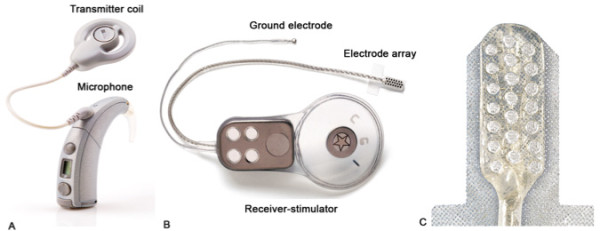According to the World Health Organization, over 5% of the world’s population experiences disabling hearing loss. Said individuals may often receive cochlear implants, however, these implants won’t always work for everyone. Now there is a newer technique being tested: auditory brainstem implants (or ABI).
Auditory brainstem implantation can restore hearing for individuals who cannot benefit from cochlear implants. Right now, it is a very rare procedure with less than 200 being implanted worldwide in children. These auditory brainstem implants have been approved by the FDA in the U.S. for adults and teenagers who’ve lost their hearing to nerve damage, but the implants have yet to be approved for younger children.
Jiya Bavishi is one of the few children who has had the procedure done within the U.S. There are three parts to the ABI device, as explained in this excerpt from NPR:
There’s the piece that sits on her ear, which works like a microphone to pick up sounds. That microphone is attached to a small black magnet that rests on her head. What you can’t see is what the magnet is connected to. And this is what makes it different from a cochlear implant. Below the skin, there’s a receiver, and down in the brain stem is the microchip. The idea is that the sounds picked up from the microphone on her ear end up in the implant in the brainstem.

Doctors told the Bavishis not to expect any changes for a year or two. “They actually had to tell us, even though she’s doing so good right now, we have to still be careful where we set our expectations,” says Jigna, Jiya’s mother.
Besides Jiya, there are four other children participating in the study, and doctors will continue monitoring them for the next few years. The doctors will be studying how the children’s brains develop and incorporate speech and sounds.
To learn more, check out these resources:
